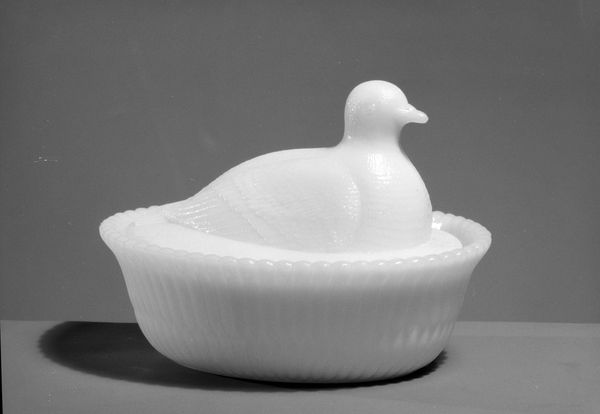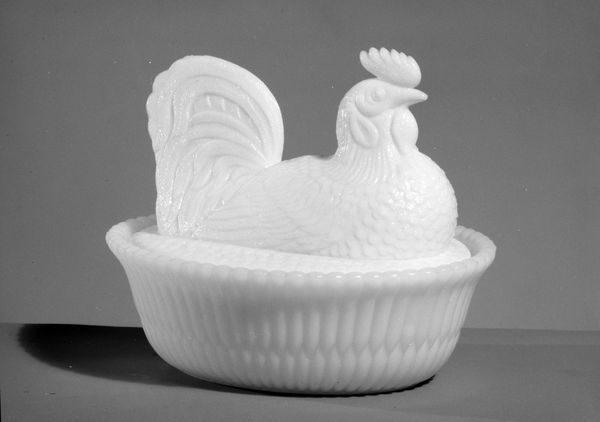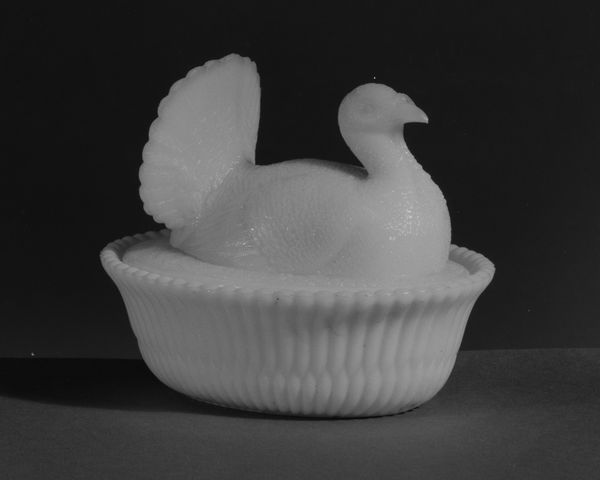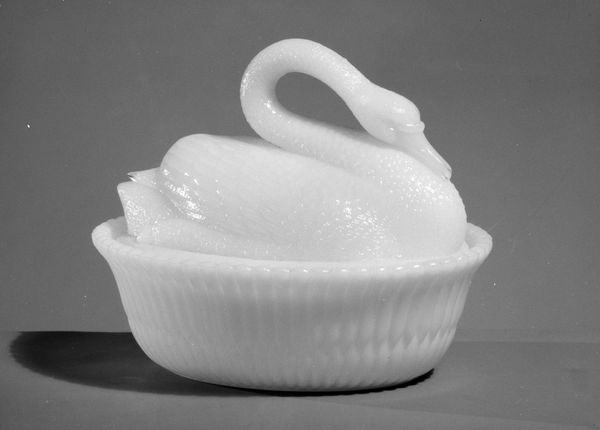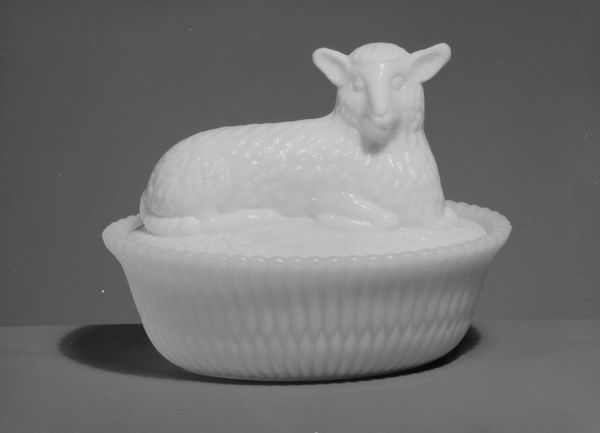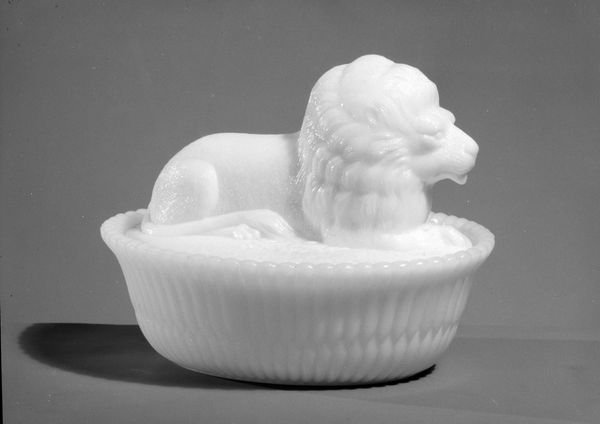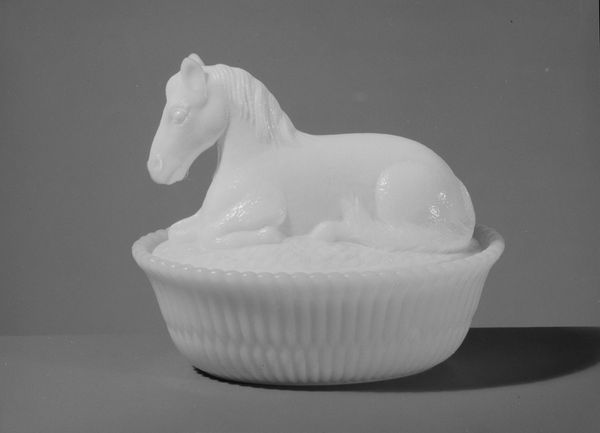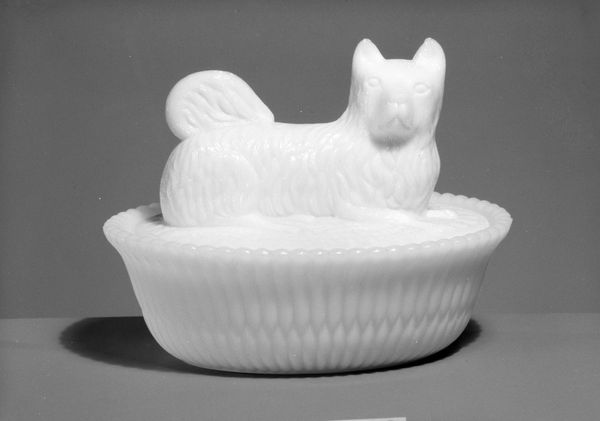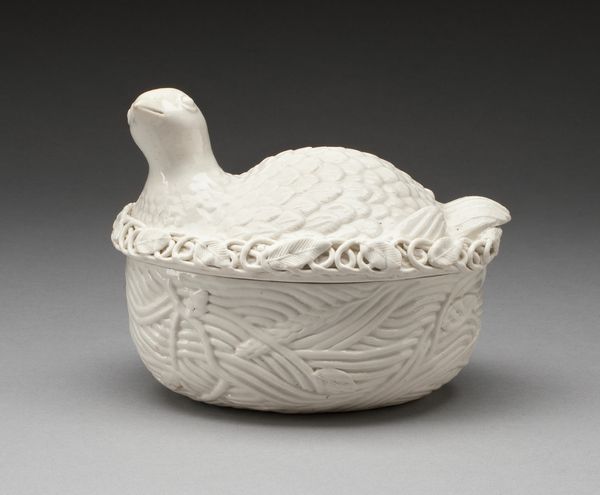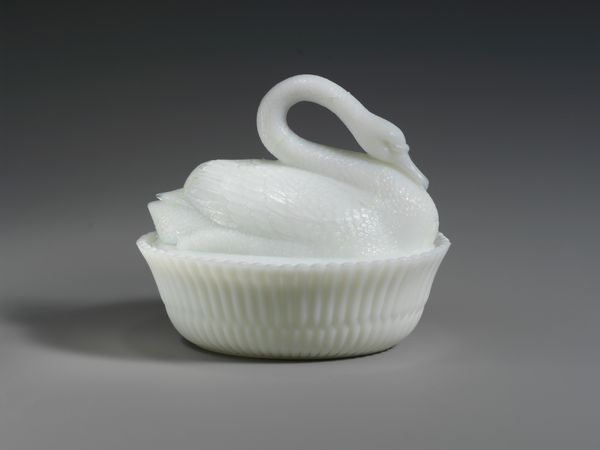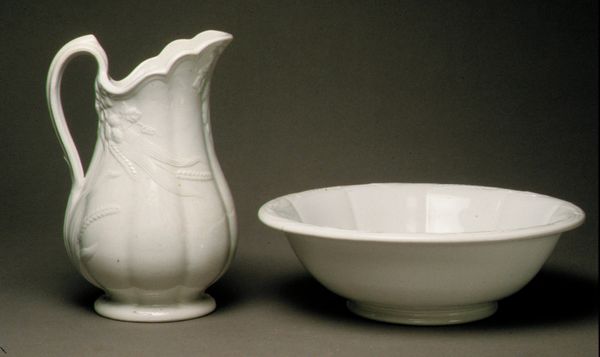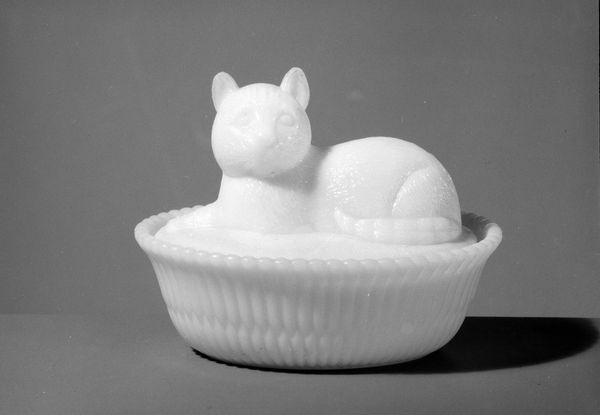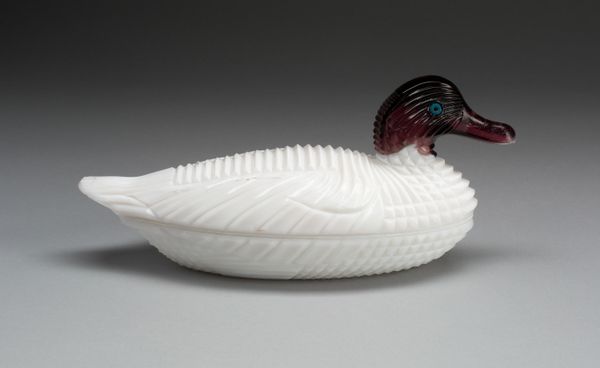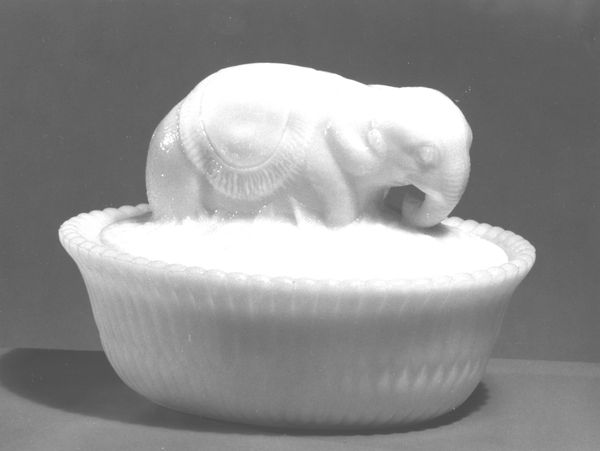
ceramic, glass, sculpture
#
ceramic
#
bird
#
figuration
#
glass
#
stoneware
#
folk-art
#
sculpture
#
united-states
#
decorative-art
Dimensions: 4 3/8 x 4 1/4 x 5 1/2 in. (11.1 x 10.8 x 14 cm)
Copyright: Public Domain
Curator: Isn't that sweet? I feel like I'm looking into a memory. This is a late 19th-century piece titled "Figure Dish" from McKee and Brothers. It is made of glass. It reminds me of folk art; it is full of down-home charm, and is also quite popular within the Decorative Arts movement. What is your first impression? Editor: It's intensely…white. It's like looking at a pure, almost clinical rendition of domesticity. There's a comforting feel, like the platonic ideal of a mother hen watching over her chicks. A bit too sentimental, though, wouldn’t you say? Curator: Perhaps. But the ubiquity of the hen-on-nest image carries weight. These little sculptures were so prevalent. Beyond their surface appeal, the hen became this silent emblem of prosperity and familial warmth. It represents cultural memory of home life. Editor: You’re right. Think of all the farmhouses where this would sit, radiating that strange milky glow, silently absorbing generations of family dramas. I guess this innocuous object packs more cultural punch than one initially gives it credit for. It really is decorative sculpture but can also work as dinnerware! Curator: Absolutely. Look closely at the craftsmanship. The texture of the glass, molded into the shape of a woven basket…the hen's delicate feathers rendered with impressive detail. Even now it evokes a sort of nostalgia for simpler times, and also acts a memory token! Editor: But the stark whiteness washes out all that potential emotion for me. What could it look like with some texture? Different colours? I feel like I would perceive it very differently! It gives an odd blankness, like the erasure of individual stories for some unified narrative. Curator: That’s the genius, I think. By stripping it down, it can house infinite stories. Anyone can look at it and have a personal connection because it allows you to project a unique vision. It embodies domesticity in an iconographic fashion. Editor: Fair point. Instead of finding meaning, it is assigned with it. It’s an artifact, yes, but perhaps also a prompt, encouraging a little inner reflection on your own story of comfort and domesticity. That makes me appreciate it on a deeper level. Curator: Exactly. Its simple exterior reflects how each story, no matter how ordinary, has profound and enduring cultural resonance. Editor: Yes. Its silence becomes quite eloquent, doesn't it? I was perhaps too quick to judge its milk-glass stillness.
Comments
No comments
Be the first to comment and join the conversation on the ultimate creative platform.
